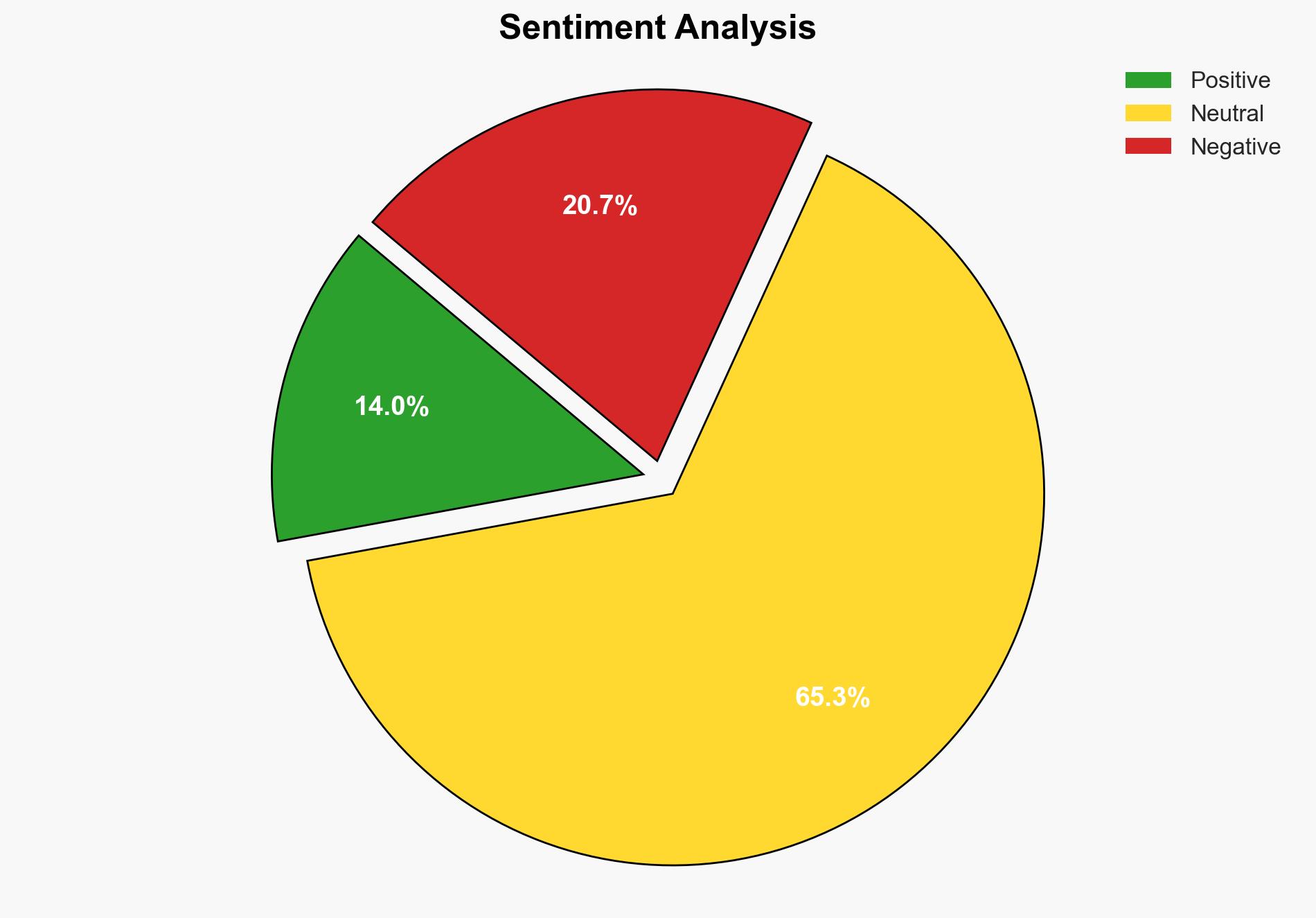Middle East updates Israel targets Syria air defenses – DW (English)
Published on: 2025-03-11
Intelligence Report: Middle East updates Israel targets Syria air defenses – DW (English)
1. BLUF (Bottom Line Up Front)
Recent developments in the Middle East highlight escalating tensions between Israel and Syria, with Israel targeting Syrian air defenses. Concurrently, ceasefire negotiations between Israel and Hamas in Qatar are ongoing, though progress remains uncertain. The situation is compounded by sectarian violence in Syria and a potential thaw in Israel-Lebanon relations. Key recommendations include monitoring ceasefire talks and preparing for potential regional instability.
2. Detailed Analysis
The following structured analytic techniques have been applied for this analysis:
General Analysis
Israel’s recent military actions against Syrian air defenses are part of a broader strategy to counter perceived threats from neighboring territories. This move coincides with internal unrest in Syria, where sectarian violence has resulted in significant civilian casualties. The ongoing ceasefire negotiations in Qatar between Israel and Hamas are crucial, as the current phase of the ceasefire is nearing its end without a clear path forward. Additionally, Israel’s release of Lebanese detainees may signal a shift towards resolving longstanding border disputes with Lebanon.
3. Implications and Strategic Risks
The escalation of military actions by Israel in Syria poses a risk to regional stability and could provoke retaliatory measures. The sectarian violence in Syria threatens to further destabilize the region, potentially impacting neighboring countries. The outcome of the ceasefire talks in Qatar could influence the security dynamics between Israel and Hamas, affecting broader Middle East peace efforts. The potential resolution of Israel-Lebanon border disputes could reduce tensions but requires careful diplomatic engagement.
4. Recommendations and Outlook
Recommendations:
- Enhance diplomatic efforts to support ceasefire negotiations between Israel and Hamas, ensuring a sustainable peace process.
- Increase intelligence monitoring of sectarian violence in Syria to anticipate potential spillover effects into neighboring regions.
- Facilitate dialogue between Israel and Lebanon to resolve border disputes and promote regional stability.
Outlook:
Best-case scenario: Successful ceasefire negotiations lead to reduced hostilities between Israel and Hamas, while diplomatic efforts resolve Israel-Lebanon border disputes, enhancing regional stability.
Worst-case scenario: Breakdown in ceasefire talks results in renewed violence, exacerbating regional tensions. Sectarian violence in Syria escalates, impacting neighboring countries.
Most likely scenario: Ceasefire negotiations continue with intermittent progress, while regional tensions persist due to unresolved disputes and ongoing violence in Syria.
5. Key Individuals and Entities
The report mentions significant individuals and organizations, including Abdul Rahman Shadid, Recep Tayyip Erdogan, Benjamin Netanyahu, and Joseph Aoun. Key entities include Israel, Syria, Hamas, the Syrian Democratic Forces, and Hezbollah.





